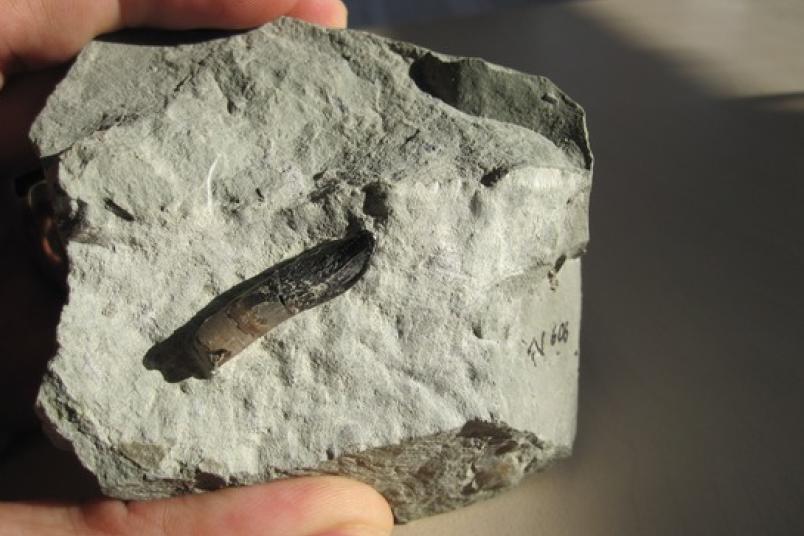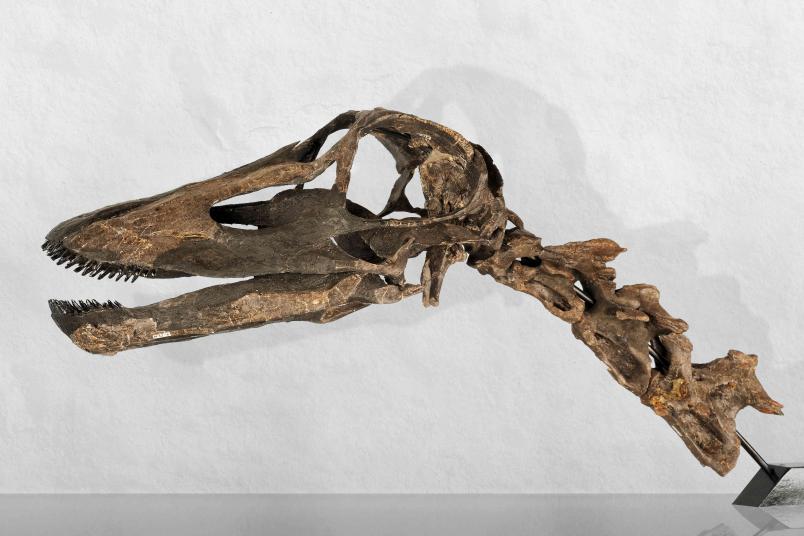
Researchers can determine the CO2 content of the air and the photosynthetic capacity of plants millions of years ago by analyzing fossilized tooth enamel.
Geological History
Dinosaur Teeth Give Glimpse of Early Earth’s Climate
A new method reconstructs carbon dioxide levels and photosynthesis from fossilized tooth enamel.
A previously untapped source of data sheds new light on the climate of the early Earth: fossilized dinosaur teeth show that the atmosphere during the Mesozoic era, between 252 and 66 million years ago, contained far more carbon dioxide than it does today. An international research team at the Universities of Göttingen, Mainz and Bochum made this discovery by analyzing oxygen isotopes in tooth enamel. They used a newly developed method that opens up opportunities for research into the Earth’s climate history. In addition, the researchers found that total photosynthesis from plants around the world was twice as high as it is today. This probably contributed to the dynamic climate during the time of the dinosaurs. The results were published in the journal PNAS.
Reconstructing the physiology of Dinosaurs
The research team analyzed the enamel of dinosaur teeth found in North America, Africa and Europe dating from the late Jurassic and late Cretaceous periods. Enamel is one of the most stable biological materials. It records different isotopes of oxygen that the dinosaurs inhaled with every breath that they took. The ratio of isotopes in oxygen is affected by changes in atmospheric carbon dioxide and photosynthesis by plants. This correlation allows researchers to draw conclusions about the climate and vegetation during the age of the dinosaurs.
In the late Jurassic period, around 150 million years ago, the air contained around four times as much carbon dioxide as it did before industrialization – that is, before humans started emitting large quantities of greenhouse gases into the atmosphere. And in the late Cretaceous period, around 73 to 66 million years ago, the level was three times as high as today. Individual teeth from two dinosaurs – Tyrannosaurus rex and another known as Kaatedocus siberi which is related to Diplodocus – contained a strikingly unusual composition of oxygen isotopes. This points to CO₂ spikes that could be linked to major events such as volcanic eruptions – for example, the massive eruptions of the Deccan Traps in what is now India, which happened at the end of the Cretaceous period. The fact that plants on land and in water around the world were carrying out more photosynthesis at that time was probably associated with CO₂ levels and higher average annual temperatures.

The skull of a Kaatedocus helped the researchers in their analyses.
This study marks a milestone for paleoclimatology: until now, carbonates in the soil and marine proxies were the main tools used to reconstruct the climate of the past. Marine proxies are indicators, such as fossils or chemical signatures in sediments, that help scientists understand environmental conditions in the sea in the past. However, these methods are subject to uncertainty. By analyzing oxygen isotopes in tooth fossils, the researchers have now developed the first method that focuses on vertebrates on land. “Our method gives us a completely new view of the Earth’s past,” explains lead author Dr. Dingsu Feng at the University of Göttingen’s Department of Geochemistry. “It opens up the possibility of using fossilized tooth enamel to investigate the composition of the early Earth’s atmosphere and the productivity of plants at that time. This is crucial for understanding long-term climate dynamics.” Dinosaurs could be the new climate scientists, according to Feng: “Long ago their teeth recorded the climate for a period of over 150 million years – finally we are getting the message.”